On this week’s Rocket Roundup: the latest crewed Soyuz launch, MS-19; a Cargo Dragon brings back science for NASA; and a JPL robot competes in a DARPA competition. Plus, this week in rocket history, we cover the grandparent of them all – Sputnik 1.
Podcast
Show Notes
Soyuz spacecraft carries astronaut, filmmakers to the ISS
Fifth Dragon 2 to return to Earth in 2021 splashes down
- NASA press release
- Ring Sheared Drop (NASA)
- Genes in Space-8 (NASA)
JPL robots navigate Kentucky cave
This Week in Rocket History: Sputnik 1
- Creation of the first artificial earth satellites (Buran)
- Korolev and Freedom of Space: February 14, 1955–October 4, 1957 (NASA)
- R7 (Astronautix via Internet Archive)
- How Sputnik changed U.S. education (The Harvard Gazette)
- Jupiter C Fact Sheet (Spaceline.org)
Transcript
Hello, and welcome to the Daily Space. My name is Pamela Gay.
And I am your host Annie Wilson.
Most weekdays the CosmoQuest team is here putting science in your brain.
Today, however, is for Rocket Roundup.
But before we get to the rocket goodness there’s something important happening this week.
World Space Week started this past Monday, October 4, the 64th anniversary of the launch of Sputnik 1. It ends next Saturday, October 10th, the 54th anniversary of the signing of the Space Treaty. Held annually since 1980, each year has a different theme. This year’s theme is “Women in Space”, and Unistellar Optics is partnering with the SETI Institute and The Planetary Society to “inspire 1 million girls to discover space” by using Unistellar Optics’s eVscope to get people to look up at the nighttime sky. They are inviting users to complete an observation challenge to look for deep sky objects discovered by female astronomers. You can read more about the events planned at the link in our show notes.
With that out of the way, let’s get to it, shall we?
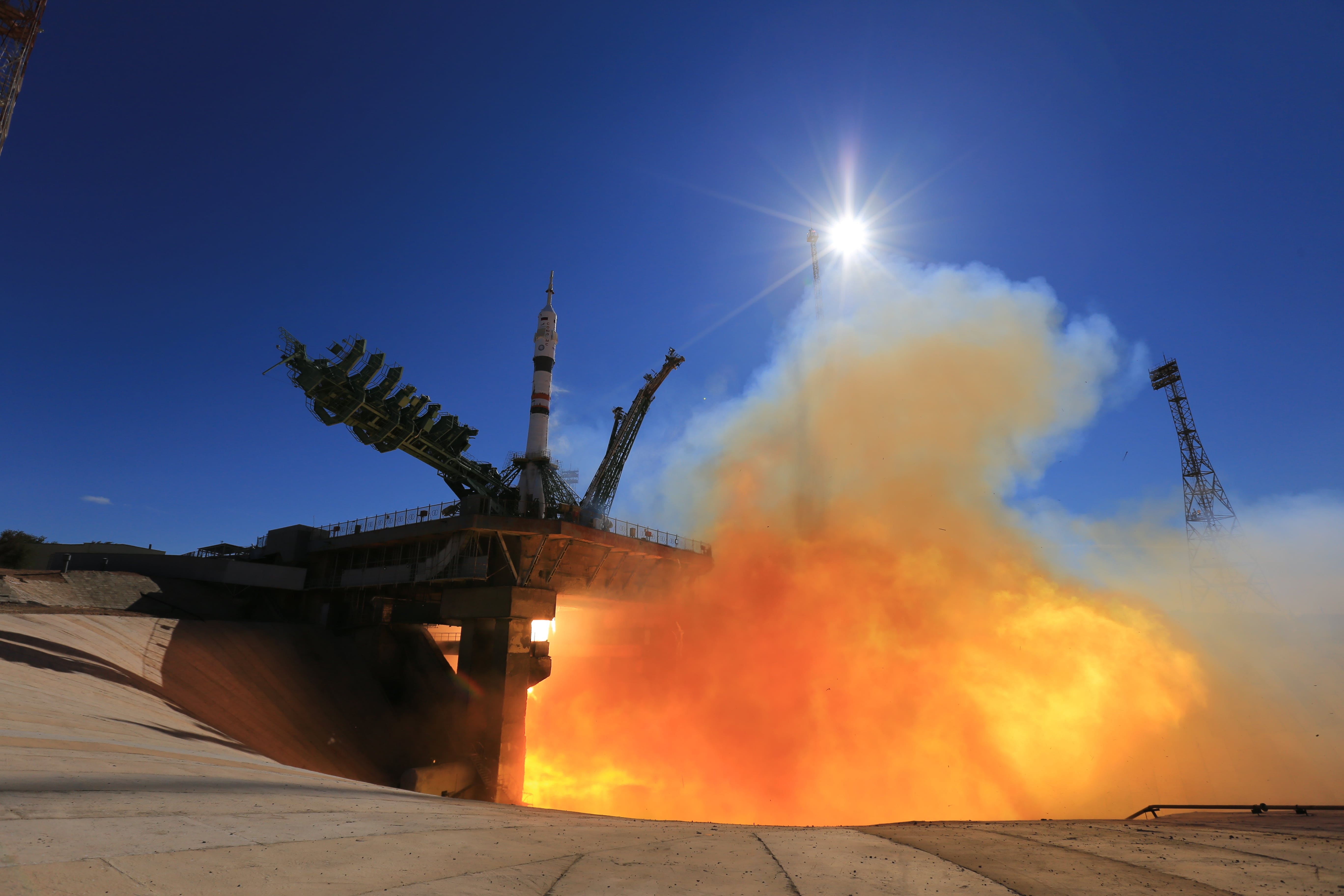
For our one and only launch of the week, on October 5 at 08:55 UTC, a Roscosmos Soyuz 2.1a launched the Soyuz MS-19 spacecraft toward the ISS.
Onboard were cosmonaut Anton Shkaplerov, and two passengers: filmmaker Klim Shipenko and actress Yulia Peresild. Shipenko and Peresild aren’t trained astronauts, but they are professionals going to space to do their Earth jobs. They are the first commercial film crew to film a movie in space. Because there is only one fully-fledged cosmonaut aboard, both on the way up and the way back, the capsule was modified to facilitate its operation by just one person.
After a textbook launch into the sunny central Asian skies, the capsule took just two orbits to catch up to the ISS. The capsule was scheduled to dock with the station’s Rassvet Module at 12:12 UTC, but there was a brief delay due to a communications issue between the Soyuz and the KURS automated docking system. Shkaplerov took over manual control with about 70 meters to go, and the docking was completed with no other issues at 12:22 UTC. The total trip time was 3 hours and 27 minutes, which is 24 minutes shy of the Guinness World record set almost exactly a year ago by the MS-17 mission.
Shipenko and Peresild will spend 12 days in space filming their movie, called “Challenge”, which is billed as the first feature film shot in space. They will return to Earth on October 18 onboard the Soyuz MS-18 spacecraft with cosmonaut Oleg Novitsky. Soyuz spacecraft are only rated for 180 days in space attached to a space station, but they can remain in space for 210 days in case of an emergency. MS-18 will return to Earth after spending 192 days in space – exceeding the 180-day limit by a few days but still within the maximum limit.
The MS-19 spacecraft will return with astronaut Mark Vande Hei and cosmonaut Pyotr Dubrov in March 2022 after the pair will have spent a total of 355 days in space. This will be the longest spaceflight by a NASA astronaut, Dubrov’s first flight, and the fourth-longest human spaceflight overall.
Next up, a Cargo Dragon returns science to Earth.
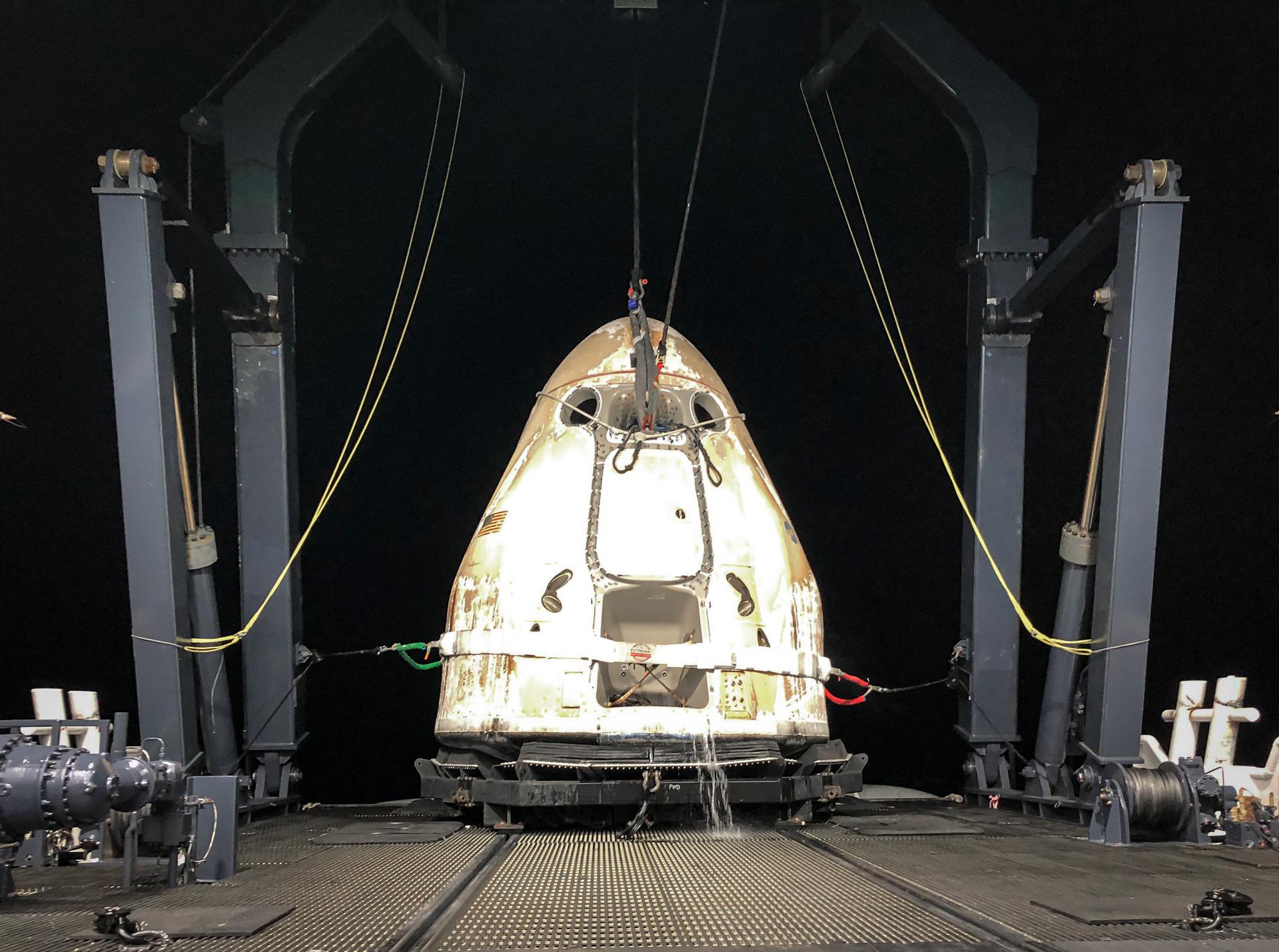
At 03:59 UTC on October 1, SpaceX’s CRS-23 Dragon successfully completed its one-month mission to the ISS, becoming the first Cargo Dragon to splashdown in the Atlantic
Previously, Cargo Dragons have splashed down in the Pacific or the Gulf of Mexico. Because CRS-23 landed in the Atlantic, it only took a few hours to return samples back to Kennedy by helicopter after landing. The recovery ship that collected the Cargo Dragon has a primary mission of astronaut recovery, with a helipad for use in the event of a medical emergency. In this case, the samples were fast-tracked back to land so they could be analyzed before their return to gravity had an opportunity to affect them. Processing samples both before and after launch at the same lab (at Kennedy Space Center) helps with consistency in the measurements.
Among the experiment samples returned to Earth was an experiment that used surface tension in a liquid between two rings to form a container, much like a soap bubble. The container was then spun to study the formation of proteins called amyloids associated with diseases like Parkinson’s and diabetes to help in the development of treatments.
CRS-23 also brought back samples from experiments trying to improve astronauts’ health in space, including two muscle cell slides: one treated with a muscle loss inhibitor and the other with a muscle growth agent. The two biomaterials in the experiment may also be helpful for elderly people on Earth, who are prone to lose muscle mass over time.
The final experiment which returned on CRS-23 investigated liver enzymes to figure out why some drugs aren’t metabolized by astronauts in space as well as when they are on Earth. The experiment was specifically looking at how gene expression, the process of interpreting DNA, changes in microgravity to understand why drugs are less effective in space.
Mice were dosed with the common painkiller acetaminophen, the active ingredient of Tylenol. RNA from the mice was extracted and mixed with chemicals to make testing in space easier. Onboard the ISS, astronauts performed a method called Polymerase Chain Reaction (PCR) to make a lot of copies of that small sample. PCR is the same process used in the slower but more accurate COVID-19 test. Because of a dye that bonded to some of the mouse DNA, there is a visible difference in how much acetaminophen was metabolized. This makes it possible to determine how much of an effect microgravity had on gene expression related to drug metabolization.
Moving on to something underground, DARPA’s Subterranean Challenge.
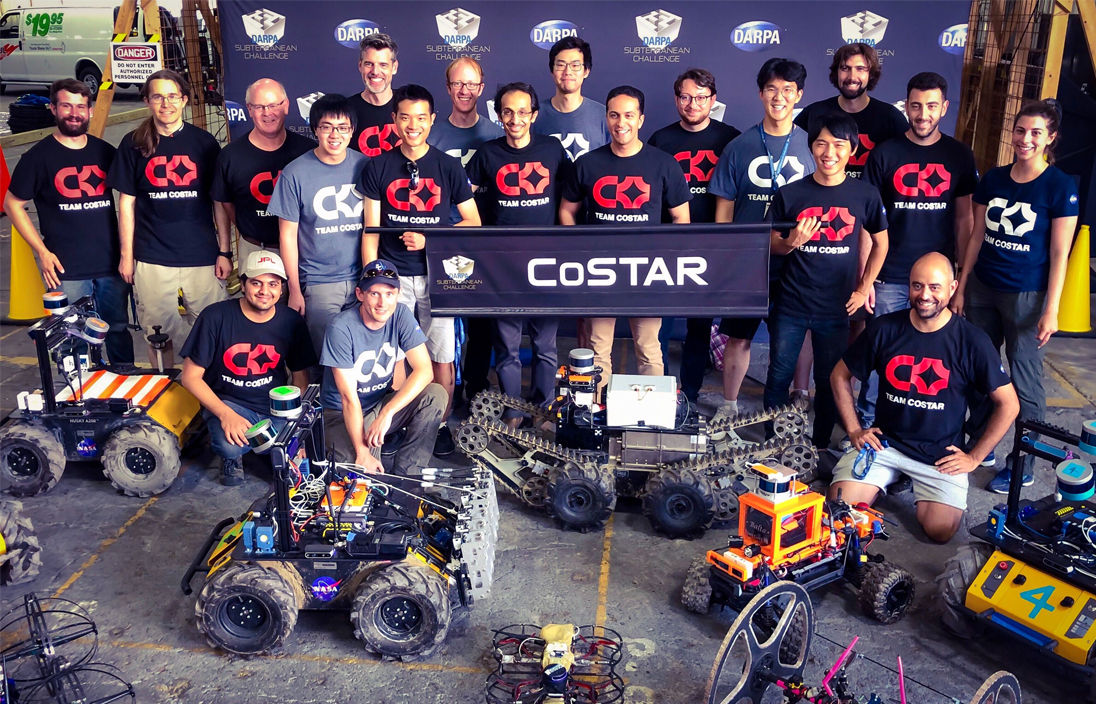
Late last month, the Defense Advanced Research Projects Agency, or DARPA, the government agency famous for developing what eventually became the Internet back in the 1960s and who continues to maintain many active projects in an effort to develop bleeding edge technologies for the U.S. military, conducted a challenge. This was part of DARPA’s broad-spectrum approach to technology development by enlisting the private sector in the investigation of various concepts and principles that the agency cannot otherwise easily pursue on its own.
The challenge that just ended was called the SubT or Subterranean Challenge. The goal of the SubT was to “rapidly map, navigate, search, and exploit complex underground environments, including human-made tunnel systems, urban underground, and natural cave networks.” The competition was divided into two categories: Systems, where teams build physical things to accomplish a goal, and Virtual, where teams test software and algorithms in a virtual representation of terrains.
The Systems teams were divided into three further subcategories: Tunnel Systems, Urban Underground, and Cave Networks. NASA’s Jet Propulsion Laboratory (JPL) was one of the eight teams in the Systems category. Four other teams entered but did not make it into the final competition.
Their robot, CoSTAR or Collaborative SubTerranean Autonomous Resilient Robots, was actually several ground robots working together with a flying robot. The key thing CoSTAR is designed to solve is providing an energy-efficient team of robots that can overcome obstacles in extreme environments, which will be useful for both military applications and future planetary exploration. Development was mainly focused on networking the robots so they could work together autonomously, combining what they could see with their sensors into one system. The JPL robots do all of this without GPS because there isn’t GPS on Mars, yet; instead, they use magnetic field measurements for positioning.
CoSTAR won the Urban Underground Circuit and placed fifth in the final competition, behind teams from the University of Colorado Boulder, Carnegie Mellon, CSIRO in Australia, and the University of Nevada, Reno
This Week in Rocket History

This week in rocket history features an important milestone in space exploration: the 64th anniversary of the Sputnik 1 launch.
In the mid-1950s, both the Americans and the Soviets were developing large rockets capable of delivering nuclear warheads to locations thousands of kilometers away. In 1954, Sergei Korolev, head of the main Soviet rocket development bureau, and Mikhail Tikhonravov, an early pioneer in rocket development, presented a report stating that the launch of an artificial satellite into Earth orbit was an inevitable use of rocket technology and that the Soviets should do this first.
The very next year, 1955, the United States announced that they were going to launch a satellite during the International Geophysical Year in 1957. Less than a week after that announcement, Korolev’s plan was approved by the Soviet government.
With official permission secured, Korolev’s Design Bureau, OKB-1, set to work designing his satellite. What they came up with was astounding. The satellite would weigh 1.4 metric tons – or about the same as a beluga whale. Two hundred kilograms — that’s 100 two-liter soda bottles — of that was just the science instruments. The preliminary design of the satellite was completed in July 1956, with its launch also planned to take place during the International Geophysical Year in 1957.
By the end of 1956, the Soviet scientists realized that this large satellite, officially called Object D, would not be ready for the International Geophysical Year. So they put that work on hold and began designing the simplest satellite possible to launch during the International Geophysical Year.
In February 1957, the new satellite was approved as Object PS, or “Simplest Satellite”. It was a highly polished aluminum sphere 58 centimeters in diameter (about twice the size of a basketball) with four long antennae deployed after separation. It would be only 100 kilograms at most, compared to the over 1,000 kilograms of Object D. The final weight of Object PS was 83.6 kilograms. Instead of carrying hundreds of kilograms of scientific equipment, it would only have a few kilograms of radio transmitters. Basically, its only mission was to beep.
Two military R7 rockets were assigned to launch the Simplest Satellite and a successor. But, before the R7 could launch a satellite, it needed to prove that it could perform its primary mission: delivering warheads. The R7 needed to complete two successful test flights before going to space.
A total of five tests using inert nosecones – not live warheads – were conducted in Kazakhstan at a brand new launch site: the Baikonur Cosmodrome.
The first three R7 launches failed for various reasons, but the fourth and fifth were successful. Well, except for the dummy warhead that burnt up on the fifth launch, but that wasn’t the rocket’s fault. Those successful test flights cleared the way for the first orbital launch attempt.
The R7 rocket with Sputnik 1 launched at 19:28:34 UTC on October 4, 1957. After 295 seconds of burn, the 1.5-stage rocket inserted Sputnik 1 into a 223-by-500-kilometer orbit inclined 65 degrees to the equator.
TASS, the state news agency, did not announce the successful launch until the satellite had completed an orbit to ensure it was transmitting successfully.
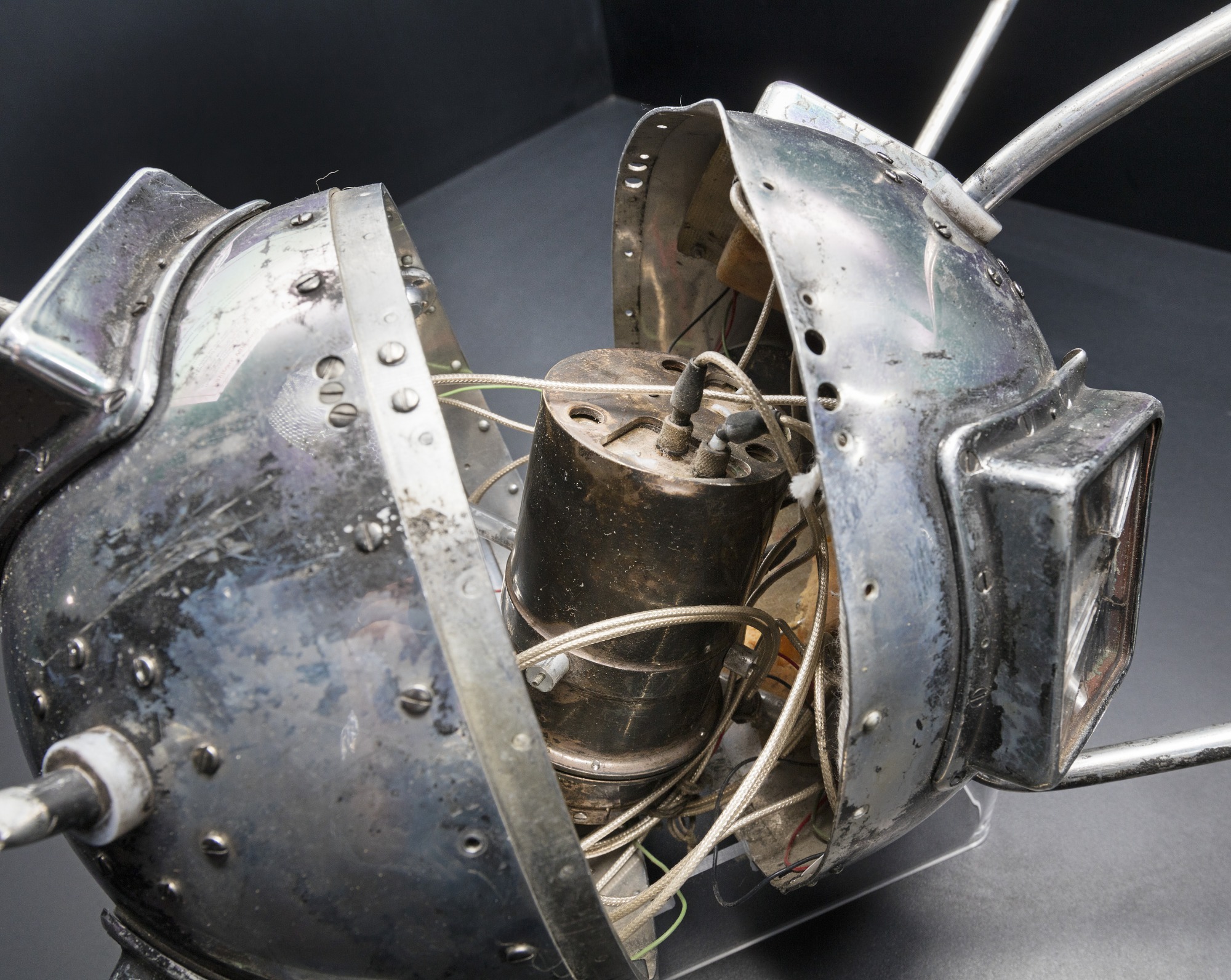
Sputnik 1’s radio transmitter functioned for three weeks, delighting amateur radio operators around the world. The two frequencies it transmitted on were disclosed by the Soviets before launch. It re-entered the atmosphere after three months in January 1958.
The launch took the U.S. by surprise, even though the Soviets had announced plans for a satellite months and years prior to the launch. The Eisenhower administration considered it a stunt, only later taking it seriously. The launch of Sputnik 1 sent a wake-up call to the U.S.; it was proof that the Russians had the capability to nuke the United States with little notice. In reality, the R7 was a very poor tactical missile because it required hours of preparation on the launchpad to load its cryogenic liquid propellant.
The Sputnik Crisis, as it became known, caused an overhaul in the U.S. education system to focus on more math and science. The U.S. passed the National Defense Education Act a year after Sputnik’s launch to increase funding for education at every level and to encourage students to study science and technical fields. A specific curriculum change — that has persisted to this day — introduced hands-on laboratory experience.
The U.S. could have launched a satellite in September 1956 on a Jupiter-C rocket by Werner Von Braun’s team in the U.S. Army; however, because the U.S. wanted the first American satellite to be a civilian satellite and not a military satellite, the final stage was filled with sand instead of rocket fuel to ensure that a military satellite wasn’t “accidentally” launched first.
The civilian program produced the Vanguard rocket, which was developed from a sounding rocket called Viking. Vanguard made its first launch in March 1958 and failed spectacularly on live television. The tiny satellite, Vanguard 1, about 1.5 kilograms, was dubbed “Kaputnik” by the press. Despite its small size, the satellite survived the explosion only mildly dented and is now on display at the National Air and Space Museum.
Statistics
To wrap things up, here’s a running tally of a few spaceflight statistics for the current year:
Toilets currently in space: 8: 4 installed on ISS, 1 on the Crew Dragon, 1 on the Soyuz, 1 on the other Soyuz, and 1 on Tianhe.
Total 2021 orbital launch attempts: 96, including 8 failures
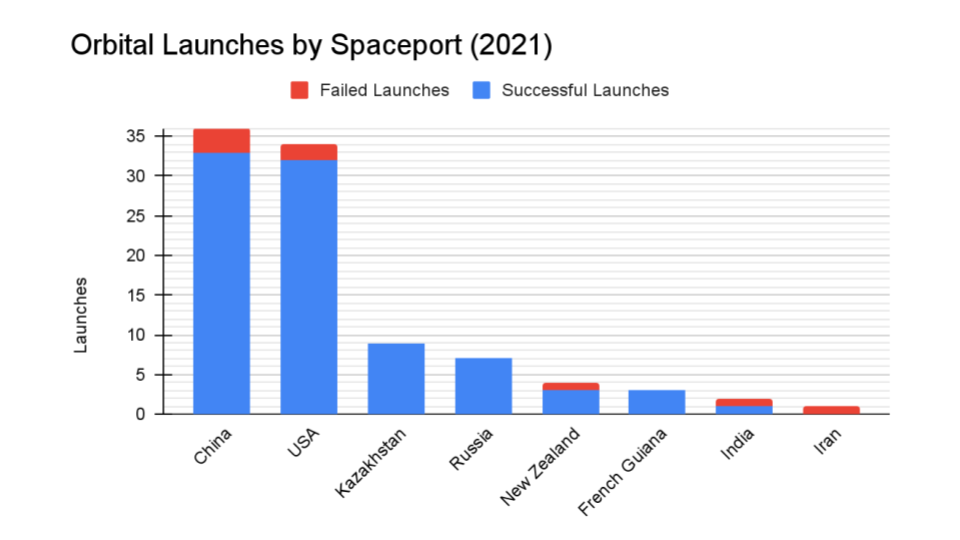
Total satellites from launches: 1461
I keep track of orbital launches by where they launched from, also known as spaceport. Here’s that breakdown:
China: 36
USA: 34
Kazakhstan: 9
Russia: 7
New Zealand: 4
French Guinea: 3
India: 2
Iran: 1
Your random space fact for this week is a double birthday celebration for NASA and JAXA! This past Friday, October 1st, was the anniversary of the first day of operations of NASA in 1958 after absorbing the previous group, NACA. Friday was also the anniversary of the October 1st, 2003 merger that created JAXA out of three previous agencies… one of which was ALSO founded on October 1st but in 1969. Space is pretty popular in the fall, it seems.
This has been the Daily Space.
You can find more information on all our stories, including images, at DailySpace.org. As always, we’re here thanks to the donations of people like you. If you like our content, please consider joining our Patreon at Patreon.com/CosmoQuestX.
Credits
Hosts: Annie Wilson and Beth Johnson
Writers: Gordon Dewis, Pamela Gay, Erik Madaus, and Annie Wilson
Audio and Video Editing: Ally Pelphrey
Content Editing: Beth Johnson
Executive Producer: Pamela Gay
Intro and Outro music by Kevin MacLeod, https://incompetech.com/music/


 We record most shows live, on Twitch. Follow us today to get alerts when we go live.
We record most shows live, on Twitch. Follow us today to get alerts when we go live.